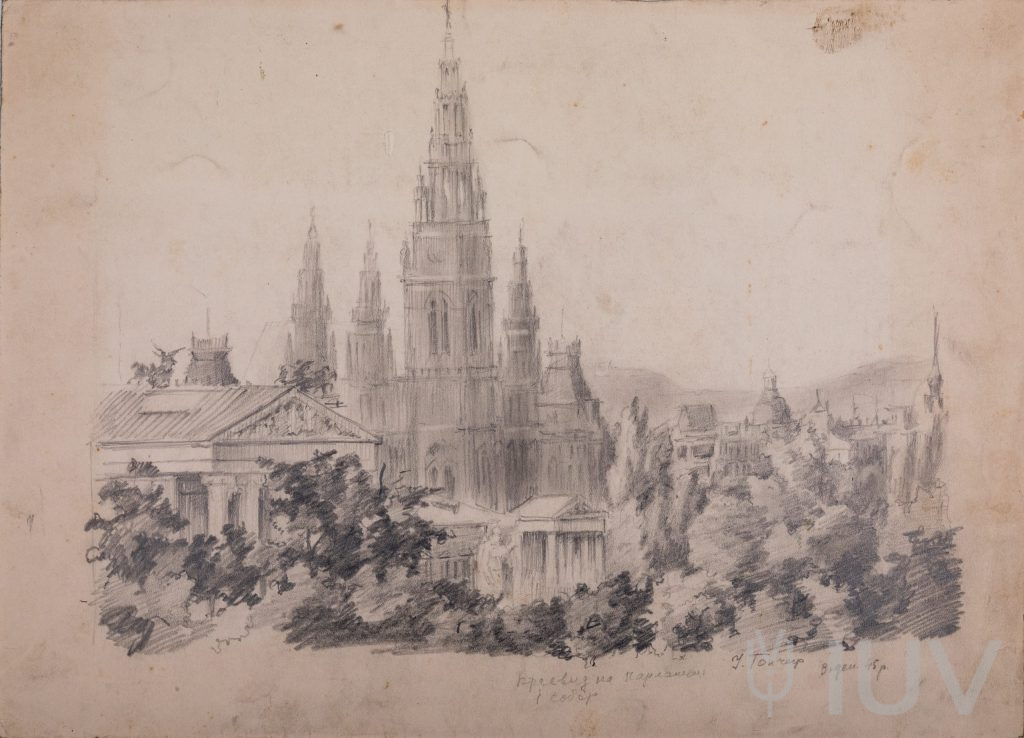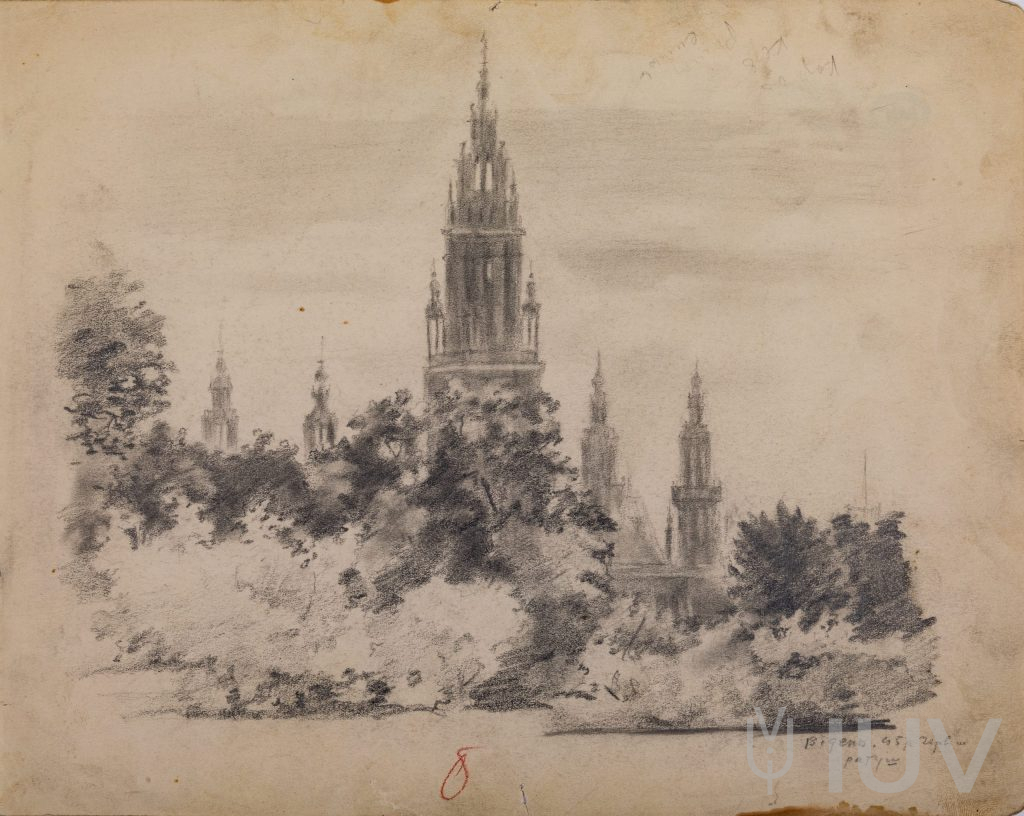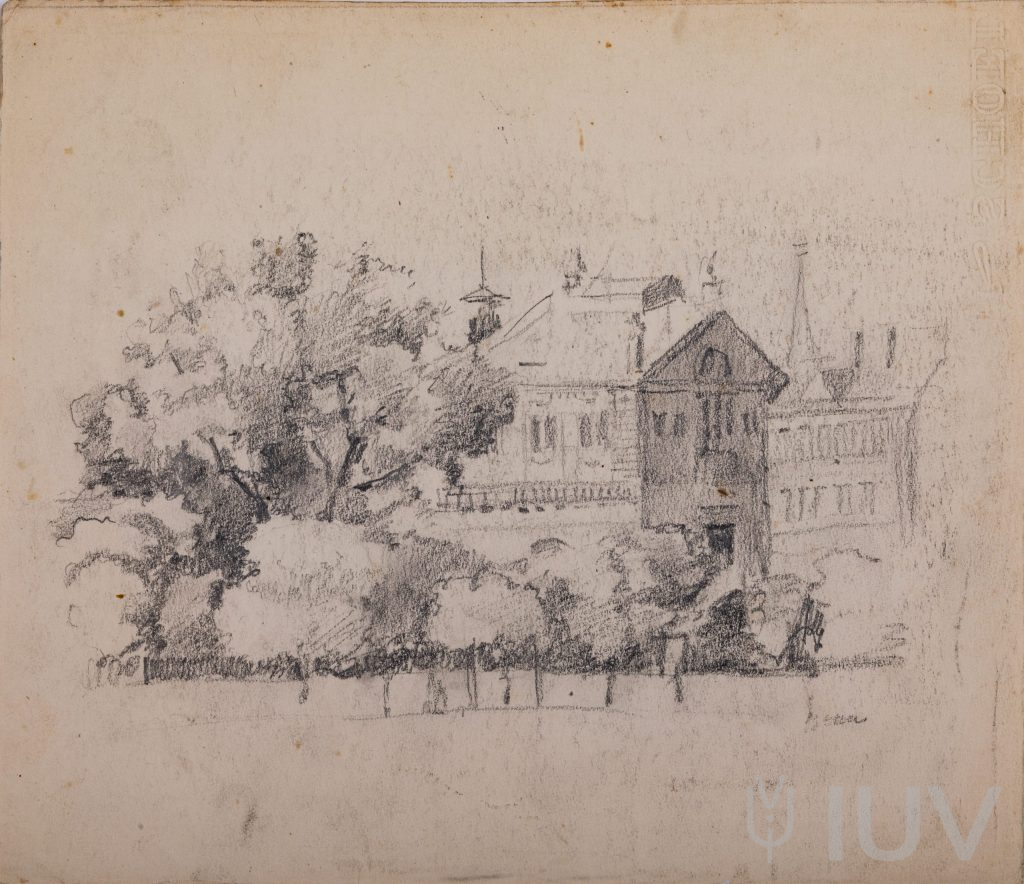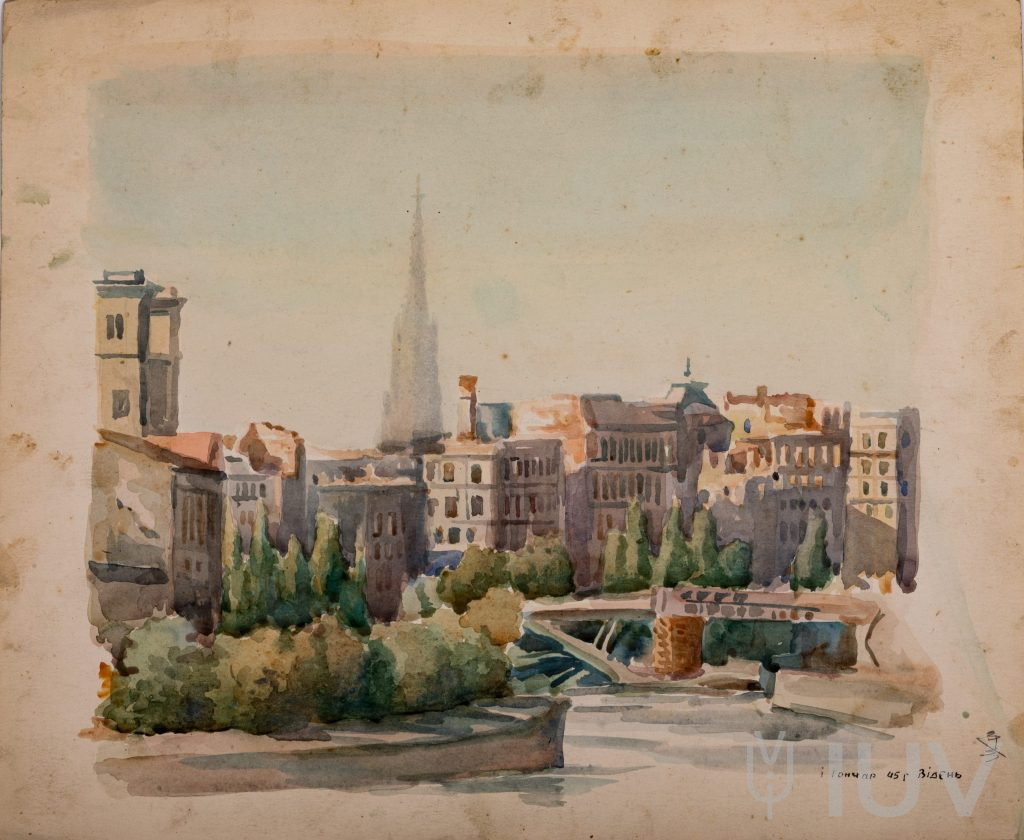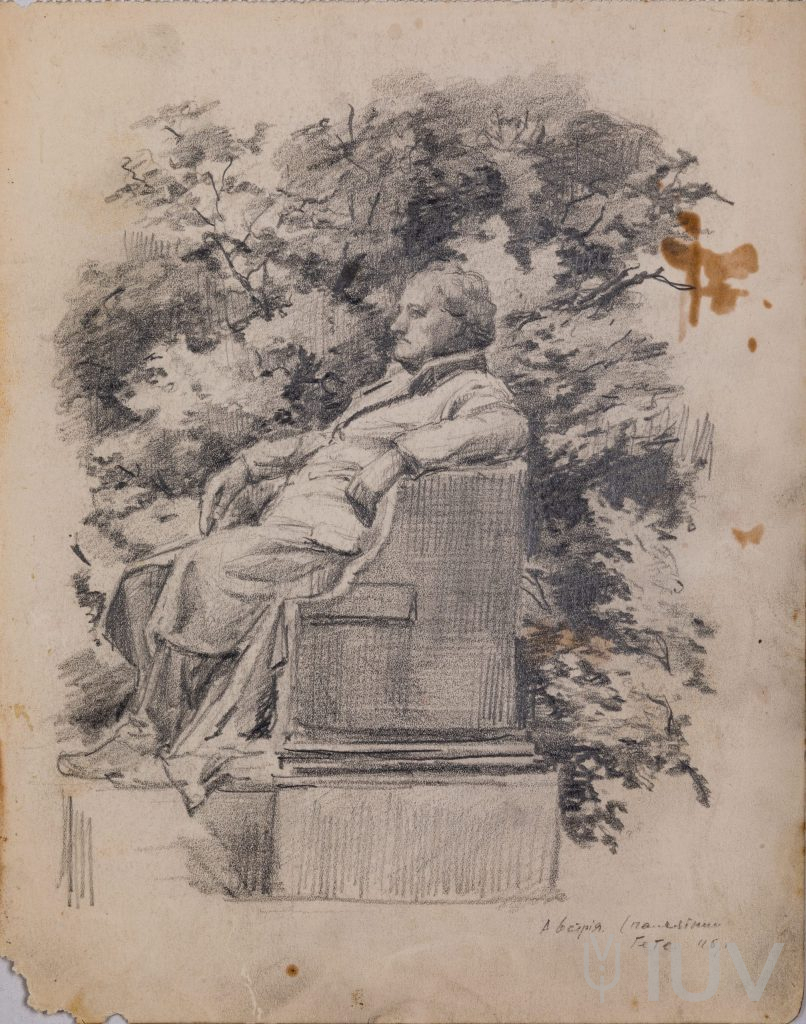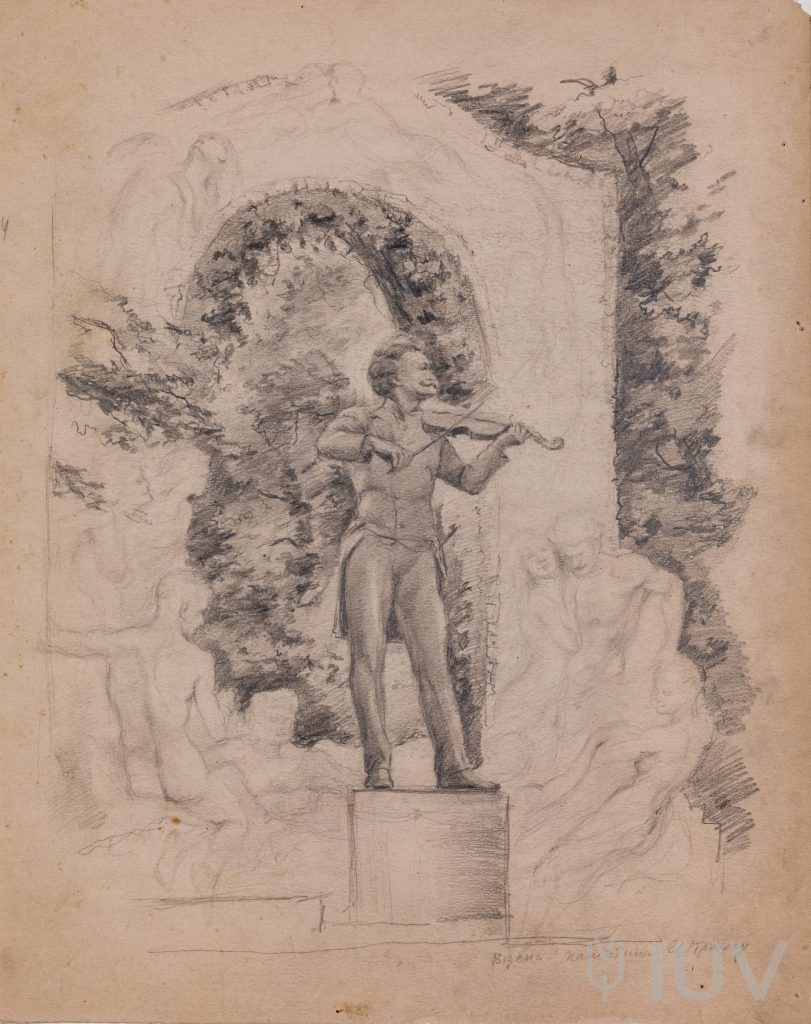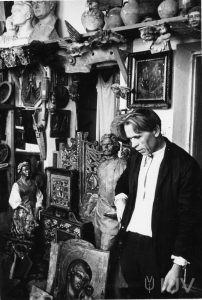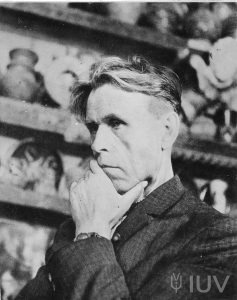Ivan Makarovych Honchar
Ivan Makarovich Honchar (1911, Lipyanka, Kyiv province, Russian Empire – 1993, Kyiv, Ukraine) — sculptor, graphic artist, painter, collector and ethnographer. Laureate of the State Prize of the Ukrainian SSR named for T. Shevchenko (1989).
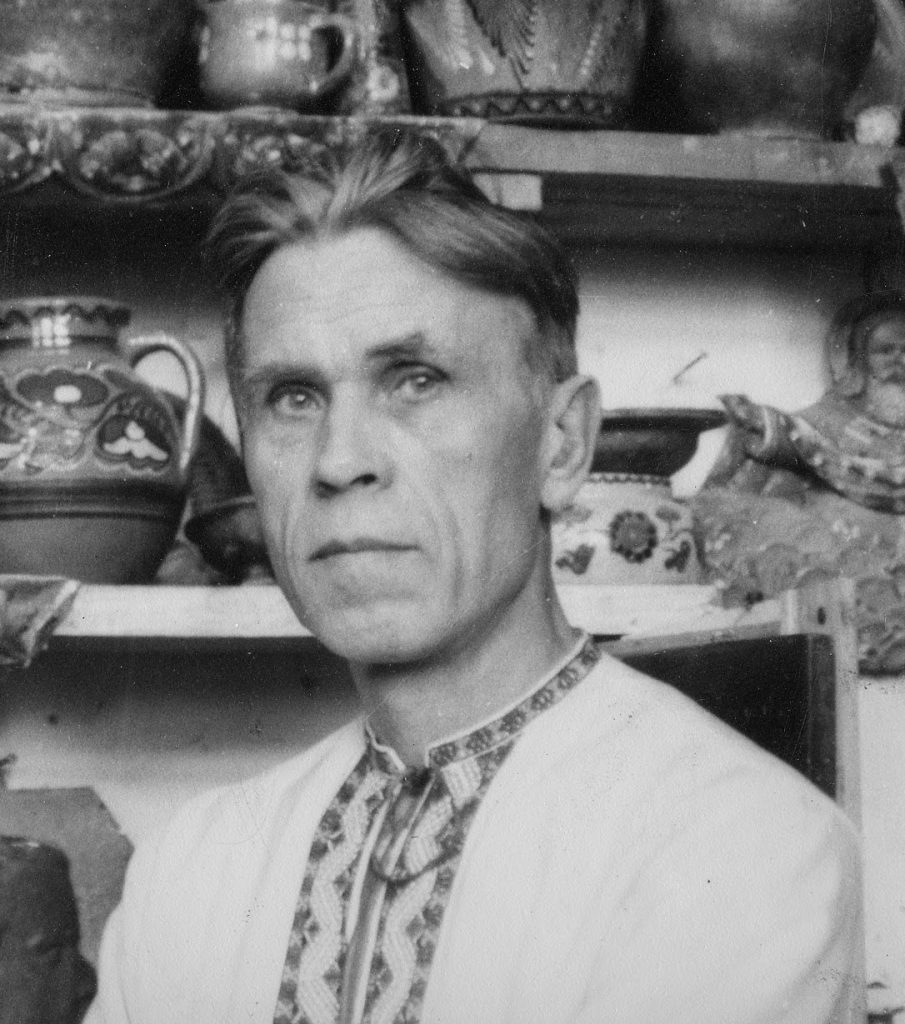
A manifestation of the love for art appeared in the 4th grade, when the young man won first place in the district art exhibition. But the defining man in the life of Ivan Honchar was the musician and folklorist Maxim Korostash. He visited his village in 1927, learned about the talented boy and took him under his wing. He helped Honchar enter the Kyiv Art and Industrial School and he resided in his apartment on Gogol Street. This acquaintance and move to the capital made Honchar’s friendship with the writer Olena Pchilka and the musicologist Klymentiy Kvitka possible.
Ivan Honchar in Vienna
Ivan Honchar took part in the Second World War, which he spent in Berlin as a liaison officer and platoon commander. He received medals “For Courage” and “For Victory over Germany”, but he remembered this war mostly because of pain and the decline of culture:
I have never felt such a sharp pain for the fate of our Ukrainian culture as after the war, after demobilization from the active Army, in which I served during the entire Great Patriotic War. The heavy impressions of that devastating war that swept across the Soviet Union and took with it the priceless treasures of our artistic culture, I’m not talking about the well-known human casualties. Having visited the borders of our Motherland – Germany, Poland, Czechoslovakia, Hungary, Austria, I saw with my own eyes how the monuments of their national culture were preserved there, and I involuntarily remembered how similar ones were barbarically destroyed in Ukraine.
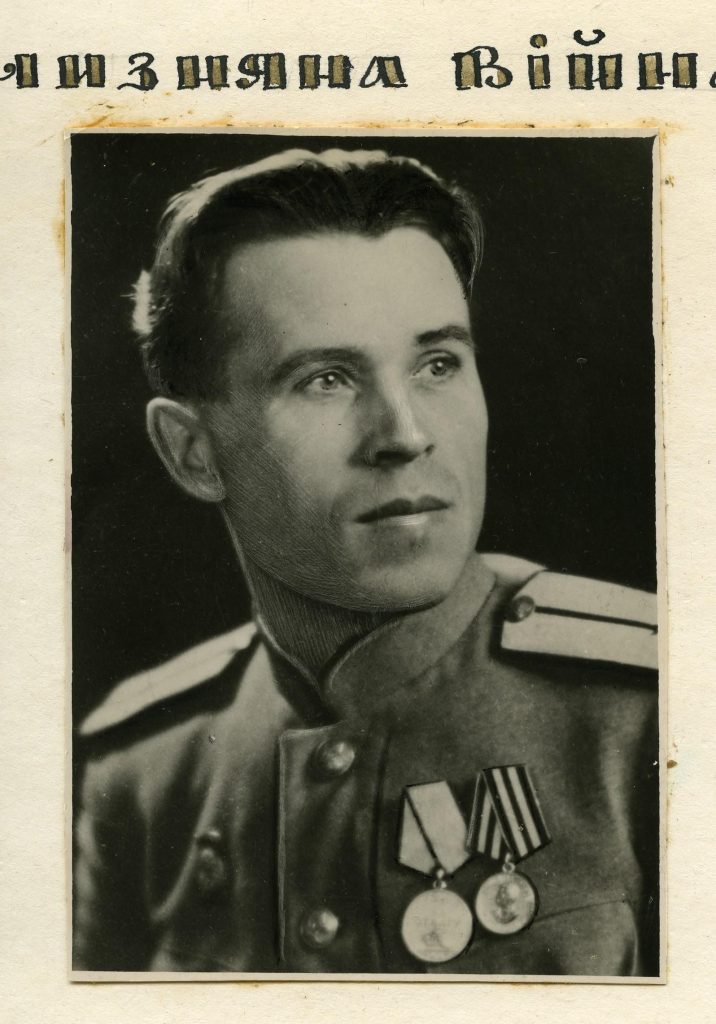
That is why Ivan Honchar promised to dedicate himself to preserving Ukrainian culture if he survived the war.
From the beginning of May to the middle of December 1945 Ivan Makarovich Honchar was in Germany. As a front-line artist, he had the opportunity to be on business trips in various cities in Germany, Poland, the Czech Republic, and Austria, which he depicted in his works, mostly in paintings.
The Vienna collection includes views of the Karlskirche (St. Charles). Take note of the wall in front of the church on the green. This wall is absent in the current landscape of the city.

Here you can view a minute-long video promo of Karlskirche → FB TUMA.
Among his drawings we see small sketches of Vienna and the park landscape of the city. Lydia Dubykivska-Kalnenko (Head of the Archive Department of the Ivan Honchar Museum) emphasizes that the Europe in Honchar’s paintings appears in all of its beauty, and the image of the city in the painter’s works is timeless. Only the dating of the works in 1945 reminds us that the paintings reflect a post-war Europe, where a terrible war had just ended.
Before Vienna, Ivan Honchar was in Prague, which impressed him greatly as it was the first major European city he visited which was relatively intact and where life was booming. An entry in his diary of July 5, 1945, states that Vienna appeared before him without much greenery and with half of it in ruins:
We left the village early for Vienna. We traveled all day in Czechoslovak and Austrian lands. But a huge difference was obvious when we transitioned from Czechoslovakia to Austria. Here it was no longer the same culture, not the same roads, a poorer people, there was not the same cleanliness, etc. And besides that, there was not that kindness of the people, as in Czechoslovakia. Late in the evening we drove to the suburbs of Vienna to the Danube, and stayed in a dirty working-class village for the night. My companion and I spent the night with an Austrian worker who knew a little Russian.
Later Ivan Honchar also went to the suburbs of Baden. His diary entries say that during his stay in and around Vienna, he was disturbed by terrible thoughts about the impact of the war on humanity and its psychological state. His heart was troubled and the consequences of his suffering did not leave him:
I have given a lot of thought to my health and to the tragedy that I feel will happen to many. The war is over. All suffering and patience have come to an end, and it is time for creative work, but my health is failing.
Despite this, Ivan Honchar tried to study the city and admire its grandeur. He went on a sightseeing tour of the city, explored museums, the zoo, “visited the residence of the Austrian kings, went to the Vienna Woods” – state the notes in his diary.
The artist painted the town hall, the parliament, there are scenes of old buildings and a view of the Schwedenplatz
Of special interest are the drawings of the Ukrainian sculptor, which depict the monuments of Goethe on the Ring in the first district of the city and Strauss in the central city park Stadtpark.
Ivan Honchar as a sculptor and his work at the Vienna Academy of Arts
In Vienna, Ivan Honchar had the unique opportunity to develop as a sculptor. The artist worked in the studio of the Austrian sculptor Ben at the Vienna Academy of Arts (Schillerplatz 3, 1010 Wien). It was here that he created many images of war heroes.
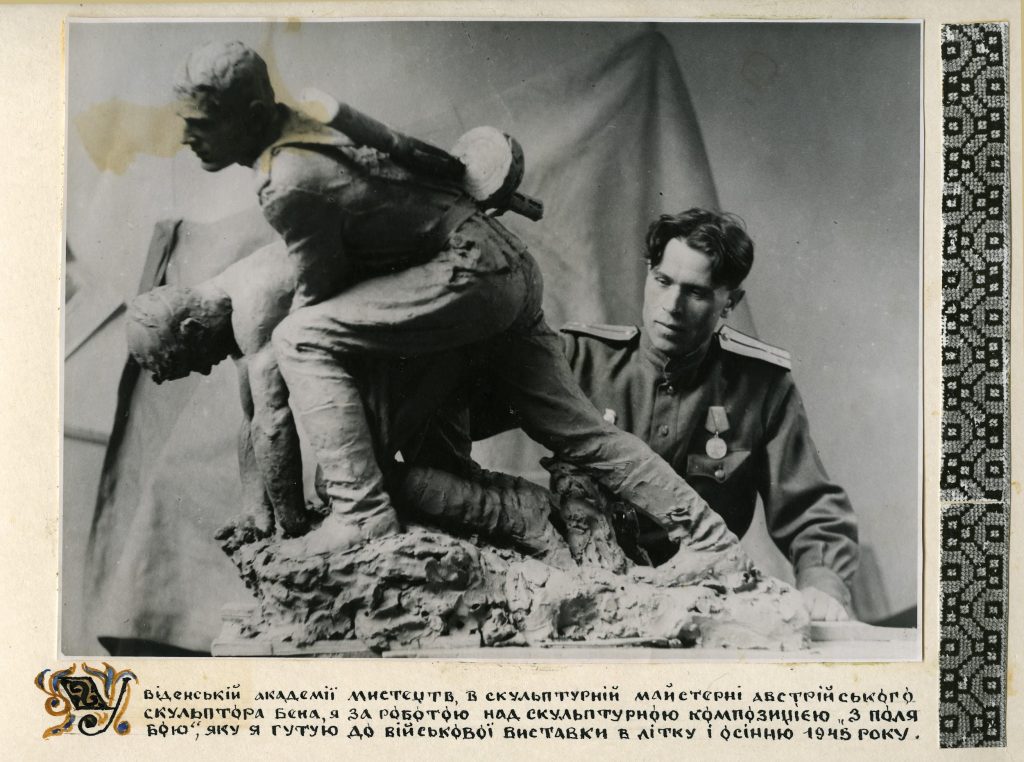
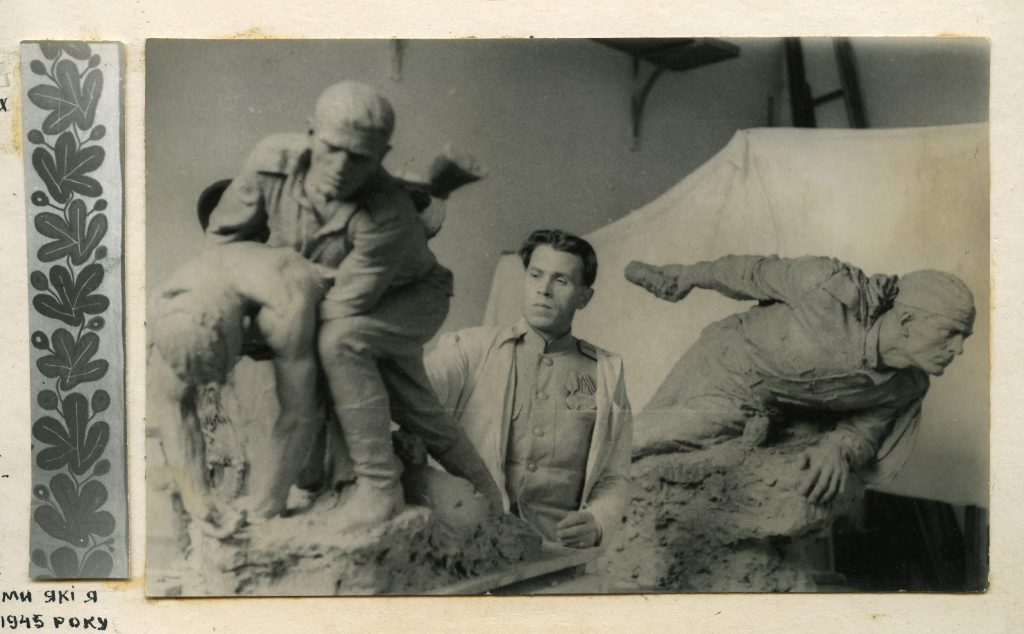

It is interesting to note that the sculptural composition “Grenade Launcher” by Ivan Honchar was included on the poster of the exhibition “The Path of the First Ukrainian Front through the eyes of veteran artists”. The exhibition was held in the halls of the Vienna Academy of Arts from July to December 1945.
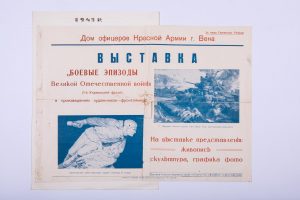
At the end of 1945 Ivan Honchar returned to Ukraine. He carried with him not only the baggage of military experience, but also the impressions and inspirations of European art with a desire to create it in Ukraine.
Ivan Honchar returned to Ukraine to the cultural front
Having returned to Ukraine, Ivan Honchar said in his own words that he “exchanged his tunic for an embroidered shirt.” In the 50’s, already essentially for a good part of his life, the sculptor went to the cultural “front”. It all began with the improvised expeditions across Ukraine, where Honchar collected artifacts for the museum – in the same improvised way. He arranged his findings in his own house. The artist lived near the Kyiv-Pecherska Lavra. The Union of Artists of the Ukrainian SSR gave him the land where his house was built, and which became the first private museum at that time.
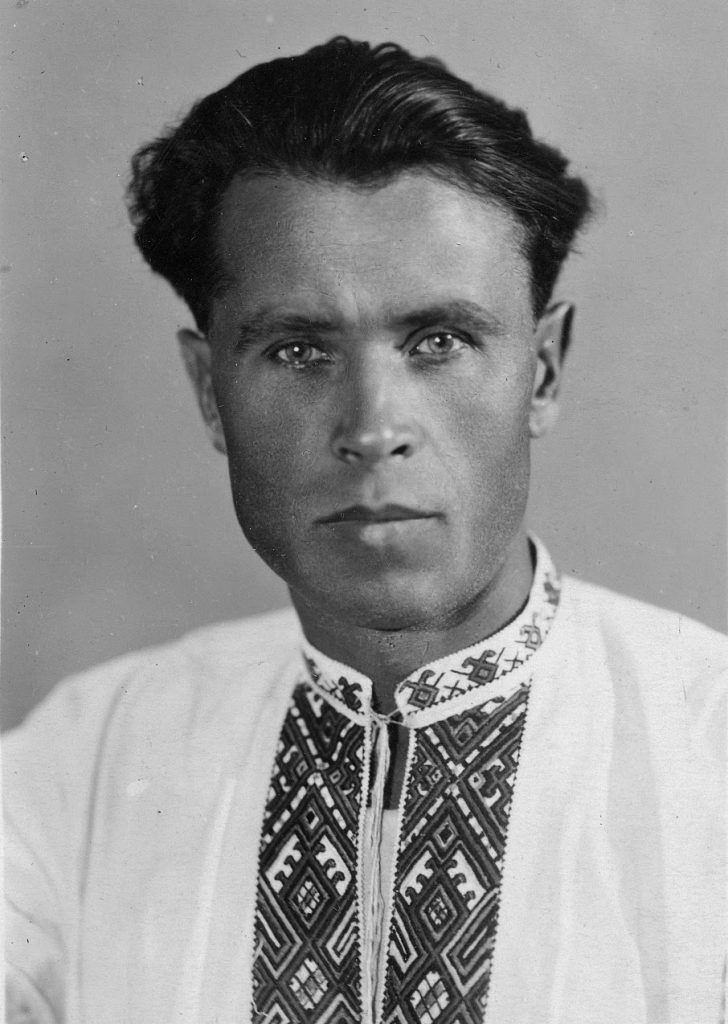
Ivan Honchar created sculptures. Critics point out that his characteristic style was dynamic compositions and bold depictions of forms. Ivan Honchar is the author of monuments to V. Sosyura (1947), L. Ukrainka (1959), T. Shevchenko (Sheshory, 1964), U. Karmelyuk (1964) and others. In addition to this, Ivan Honchar popularized Ukrainian folk art and culture. In the 1960s, young people often gathered in his house who wanted to learn more about folk art and Ukrainian culture, for which Honchar was accused of nationalism and persecuted.
Above all, Ivan Honchar dreamed that all of his materials and his collections would live in one museum and serve future generations to study their own history and culture. He considered his collection complete and did not want it to be scattered in different museums. And in fact, this happened, although not immediately. In Soviet times, the current premises of the museum were shared with the dormitory of the Ministry of Defense. Sometimes official delegations walked the corridors, where the shoes of the dormitory residents could be seen by the door. After Honchar’s death, the State Museum operated here. In 1999, the museum became the Ukrainian Center of Folk Culture, and in March 2009 it received the status of a National Museum. Today it is a National Ukrainian institution which specializes in research and cultural education.
The museum’s collection includes about 7,000 items: folk costumes, wooden sculptures, items made of metal, toys, icons, musical instruments. It also holds more than 20,000 archival photographs from different regions of Ukraine, which have been edited into 18 volumes (currently four have been published: a general volume, Galicia-Bukovina, Left Bank-Kyiv and Poltava-Slobozhanshchina).
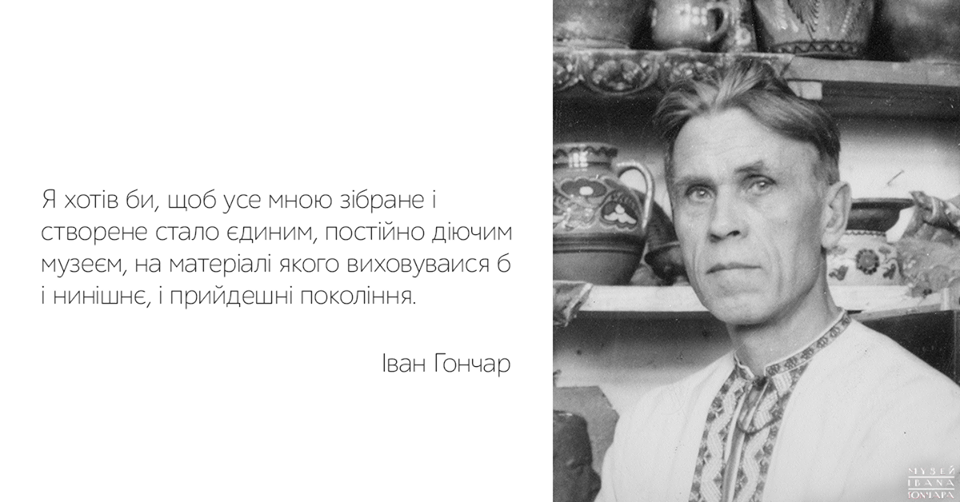
I would like all that I have collected and created would become a single, permanent museum, on the foundation of which both present and future generations could be educated. Ivan Honchar.
Ivan Honchar’s will was implemented during his lifetime. Today the Museum functions as a living organism – not only with an exhibition where you can learn about the whole of Ukraine, but also with events that speak about Ukrainian culture in contemporary language. And these comments provide the best impressions of the experience:
Alexander KARPYUK, a student of Zaporizhia National University:
– In addition to the works of the museum itself, a plaque with an inscription caught my attention: “Everything here loves and enchants, everything sings in its own way, sings with its colors, hues, shapes. This is the joy of the human soul, which has always accompanied man, helped him to live and work, eased his sad hour of public and personal grief, taught him to believe and hope, comforted him on rainy days. This is the very life of the people. ” This is part of Ivan Honchar’s introductory speech at a visit to the museum in the late 60’s. Here I felt the joy of being Ukrainian. That’s why I was once again convinced of the truth of the words: change yourself – and thousands around you will be saved (will change). This exhibition was an example of how one person can give joy to the heart for at least a two-hour tour.
Cooperation:
This material was created in cooperation with the National Center of Folk Culture – the Ivan Honchar Museum in Kyiv. For the Interactive Ukrainian Vienna project, the museum has provided exclusive drawings by Ivan Honchar from various parts of Vienna and Austria.
Contact: 19 Lavrska Street (formerly 29 Ivan Mazepa street)
From August 22, 2004 to mid-February 2018, the museum had the following exhibitions:
Being – an amalgamation of the present, past and future of humanity. These were mainly photographs of Ukrainian life.
Folk aesthetics – a collection of authentic items from Ukraine including the most characteristic dishware from different regions, embroidery and clothing.
National ideals – in this hall the exposition highlights the main national symbols of our ancestors. Here are images of Kozak Mamai and various representations of Shevchenko.
Faith – depicts how Christianity has influenced folk culture. The hall is full of images of saints and sacred items.
Peace or Folk Ethics – explores the traditions of human relations with each other and with the world. There are many examples of folk painting and embroidery.
The Hall of Ivan Honchar – in this hall, the artist’s creative work is displayed incuding various archival photos depicting his family, the war, his life in Kyiv. Copies of his books of commentaries are here where we see the signatures of famous people such as Stus, Parajanov, Pavlychko and others.
Literature:
- For the materials from the National Center of Folk Culture “Ivan Honchar Museum” in Kyiv. Special thanks to the museum staff: Lydia Dubykivska-Kalnenko (Head of the Archives Department of the Ivan Honchar Museum) Yulia Novoseltseva (PR Manager of the Ivan Honchar Museum) Victoria Kutsuruk (Deputy Director for Research and Foundation Work for the Ivan Honchar Museum). Full bibliography at https://honchar.org.ua/zasnovnyk/bibliohrafiya/.
- The City Specialized Youth Library “Young Guard”. “Prometheus of the Ukrainian spirit” (to the 100th anniversary of Ivan Honchar – sculptor, artist, ethnographer), msmb.org.ua, 2011.
- Catherine Babkin. Excursion to the Ivan Honchar Museum. PHOTO, Historical truth istpravda.com.ua, 26.10.2012.
- Library of Ukrainian Art. Ivan Honchar, uartlib.org.

